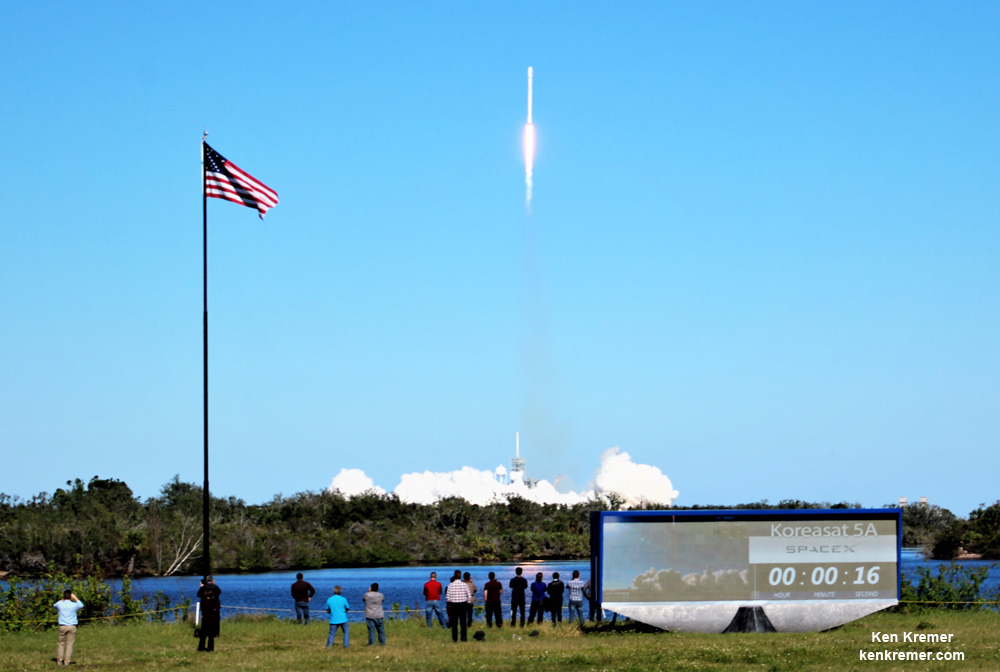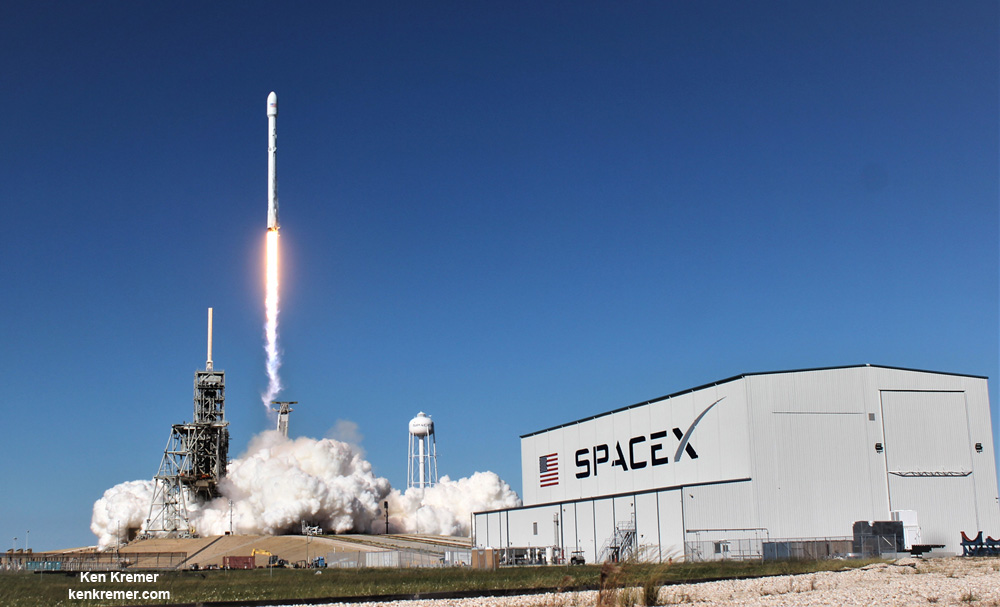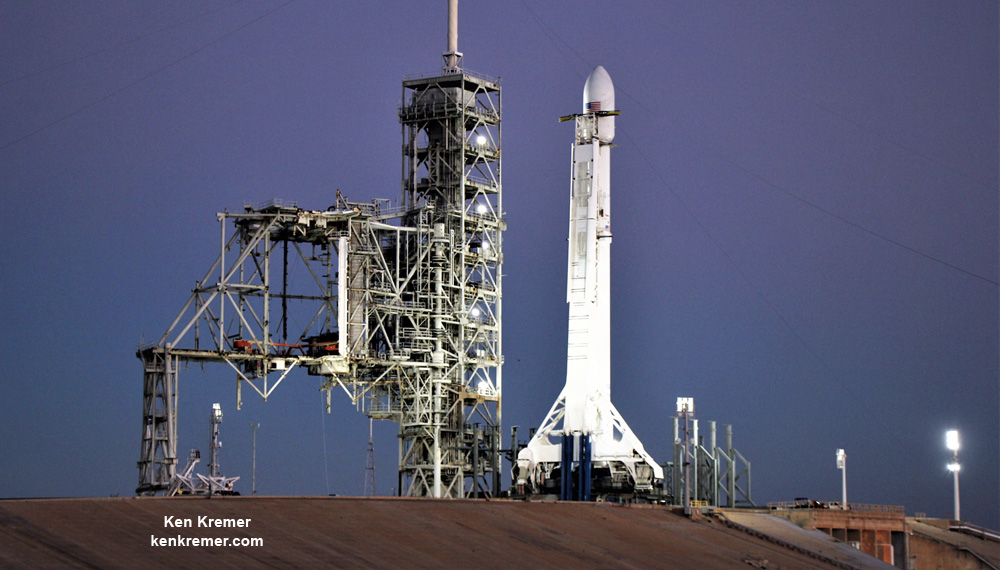
SpaceX Falcon 9 blasts off with KoreaSat-5A commercial telecomsat atop Launch Complex 39A at the Kennedy Space Center, FL, on Halloween eve 30 Oct 2017. As seen from world famous countdown clock. Credit: Ken Kremer/Kenkremer.com
KENNEDY SPACE CENTER, FL - SpaceX delivered a spectacular Halloween eve delight with today's Falcon 9 launch of a Korean HDTV satellite that lit up the Florida Space Coast skies with a glow that delighted kids of all ages and ghouls alike and put an end at last for today to the atrocious wet and windy weather afflicting the Space Coast region.
The SpaceX Falcon 9 blasted off mid-afternoon Monday Oct. 30 with the private KoreaSat-5A telecomsat mission right at the opening of the launch window at 3:34 p.m. EDT (1934 GMT) from seaside Launch Complex 39A at NASA's Kennedy Space Center in Florida.
Florida finally fulfilled its billing as the 'Sunshine State' with truly superb afternoon weather for Monday afternoon's liftoff of a SpaceX Falcon 9 with its first Korean satellite customer – and the decent weather outlook look like it will extend into Tuesdays Halloween trick or treating for the local kiddies and their imaginative costumes.
The two stage 229-foot-tall (70-meter-tall) Falcon 9 rocket shined this morning and throughout the countdown and fueling with RP-1 and liquid oxygen propellant feeding the rockets nine first stage Merlin 1D engines.

SpaceX Falcon 9 blasts off with KoreaSat-5A commercial telecomsat atop Launch Complex 39A at the Kennedy Space Center, FL, on Halloween eve 30 Oct 2017. As seen from the crawlerway. Credit: Ken Kremer/Kenkremer.com
The launch was also be accompanied by an attempt to recover the first stage booster by soft landing on an ocean going platform prepositioned off shore in the Atlantic Ocean – some 8 minutes after blastoff.
The nearly two ton commercial KoreaSat-5A satellite will provide Direct to Home (DTH) broadcasting, maritime, internet and other services to the Asian region centering around South Korea.
It has a 15 year design lifetime.
KoreaSat-5A was built by Thales Alenia Space was launched by SpaceX under a commercial contract for South Korean operator KTSAT (a KT Corporation company) using a freshly built first stage booster.
The satellite was attached to the booster encapsulated in the nose cone last Friday after engineers successfully completed the routine but required static hot fire test of the first stage engines last Thursday, Oct 26.
Koreasat-5A was built by prime contractor, Thales Alenia Space, responsible for the design, production, testing and ground delivery. It arrived at the Florida launch base on Oct. 5 for integration with the Falcon 9 rocket.
The 3,700 kg satellite is equipped with 36 Ku-band transponders and based on Thales Alenia Space's new-generation Spacebus 4000B2 platform. It will replace Koreasat 5 launched a decade ago.
The solar panels provide a payload power of approximately 6.5 kW. It will be positioned at 113° East and provide coverage for Indochina, Japan, Korea, the Philippines and the Middle East including Direct to Home (DTH) services.
Pad 39A has been repurposed by SpaceX from its days as a NASA shuttle launch pad.
To date SpaceX has now accomplished 19 successful landings of a recovered Falcon 9 first stage booster by land and by sea.
The first stage from this months SES-11 launch arrived back into Port Canaveral, FL on top of the OCISLY droneship on Oct. 15. The SES-11 comsat launched on Oct. 11.
Watch for Ken's continuing onsite coverage of SpaceX KoreaSat-5A & SES-11, ULA NROL-52 and NASA and space mission reports direct from the Kennedy Space Center and Cape Canaveral Air Force Station, Florida.
Stay tuned here for Ken's continuing Earth and Planetary science and human spaceflight news.
Ken Kremer

SpaceX Falcon 9 stands erect at sunrise with KoreaSat5A DTH TV commercial comsat atop Launch Complex 39A at the Kennedy Space Center, FL, poised for Halloween eve liftoff on 30 Oct 2017. As seen from inside the pad perimeter. Credit: Ken Kremer/Kenkremer.com
No comments:
Post a Comment